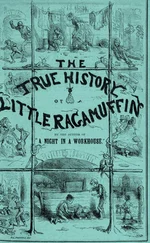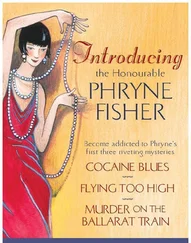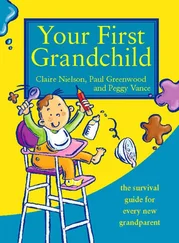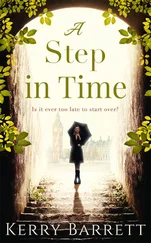Kerry Greenwood - Tamam Shud
Здесь есть возможность читать онлайн «Kerry Greenwood - Tamam Shud» весь текст электронной книги совершенно бесплатно (целиком полную версию без сокращений). В некоторых случаях можно слушать аудио, скачать через торрент в формате fb2 и присутствует краткое содержание. Город: Sydney, Год выпуска: 2012, ISBN: 2012, Издательство: NewSouth, Жанр: Детектив, Прочая документальная литература, на английском языке. Описание произведения, (предисловие) а так же отзывы посетителей доступны на портале библиотеки ЛибКат.
- Название:Tamam Shud
- Автор:
- Издательство:NewSouth
- Жанр:
- Год:2012
- Город:Sydney
- ISBN:978-1-742-23350-5
- Рейтинг книги:3 / 5. Голосов: 1
-
Избранное:Добавить в избранное
- Отзывы:
-
Ваша оценка:
- 60
- 1
- 2
- 3
- 4
- 5
Tamam Shud: краткое содержание, описание и аннотация
Предлагаем к чтению аннотацию, описание, краткое содержание или предисловие (зависит от того, что написал сам автор книги «Tamam Shud»). Если вы не нашли необходимую информацию о книге — напишите в комментариях, мы постараемся отыскать её.
Tamam Shud — читать онлайн бесплатно полную книгу (весь текст) целиком
Ниже представлен текст книги, разбитый по страницам. Система сохранения места последней прочитанной страницы, позволяет с удобством читать онлайн бесплатно книгу «Tamam Shud», без необходимости каждый раз заново искать на чём Вы остановились. Поставьте закладку, и сможете в любой момент перейти на страницу, на которой закончили чтение.
Интервал:
Закладка:
[Note: there is no bromine in pentothal but there are usually traces in the body.]
Dwyer was convinced that ‘While these quotations do not enable any conclusion to be reached concerning the cause of death in the Somerton case, the information does offer a possible solution to the dilemma’. But, as a matter of fact, what the information does is to confuse the matter even further. The writers of textbooks for the profession are not obliged to write down for the general populace but I wish these writers had told us what the sentence in square brackets actually means. Are they saying that there is usually a trace amount of the element bromine in any body at any time? In that case why is it significant? If it is not significant, why mention it at all? And why doesn’t pentothal contain any bromine if it is esjudem generis with the rest of the drugs in that paragraph? (See, I can use trade jargon as well as the next woman.) On a related tack, does the second quotation suggest that Somerton Man was a junkie? All in all, I suggest that Dwyer’s summary is extremely optimistic.
Indeed, by the time of the inquest, Dwyer had come to doubt his own theory, especially after hearing from the expert witnesses. He told the Coroner:
I think that it is a possible explanation, that barbiturate was taken or administered; it caused death, and became decomposed. That must be considered, but I do not think it is under ordinary circumstances a likely explanation… There is a big variation in the amount which people can stand. Even a quick acting one would require a massive dose to produce death by midnight if the man were alive at seven o’clock. If the dose were massive, one would expect to find it on analysis… in view of the chemist’s findings it is unlikely that barbiturates are responsible for the death…’
Dwyer also checked for signs that a hypodermic needle had been used, examining two marks between the knuckles and the back of the right hand, which, he said, ‘appeared to be recent abrasions before death’, but deciding that they were not significant. He ruled out an overdose of insulin as the cause of Somerton Man’s death, ‘on the findings of the liver’; he ruled out botulism because it required a twelve-hour incubation period and he ruled out prussic acid, whose ‘action is so rapid as to be practically instantaneous, so there would not have been time for the finding in the organs to have developed, particularly the microscopic finding’. And while he was unable to rule out diptheria toxin and aconite or aconitine altogether, he was also unable to confirm any of those possibilities. In short, Dwyer’s testimony established that Somerton Man was poisoned by a poison which could be detected, of which no trace remained in the body, and it was impossible to say whether he took it himself or whether he was murdered.
The Chemist and Department Government Analyst, Robert James Cowan, was the next witness at the inquest. He explained that he had tested for all common poisons, including cyanides, alkaloids, barbiturates and carbolic acid. He also tested for insulin. Somerton Man’s body contained none of them and Cowan concluded that ‘If he did die from a poison, then it was no common poison’.
After that, Professor John Burton Cleland LQMP, the Emeritus Professor of Pathology at the University of Adelaide, informed the inquest that there was nothing to indicate death from natural causes. He was a comparatively young man. The vessels of the heart and brain are described as being free from theroma [fatty deposits], so that if his death was attributed to a natural cause, one would have to think of some vagal inhibition, which would mean a sudden and unexpected death for which no preparation could be made, or possibly something like a diabetic coma, which would begin to overcome a person anywhere before they had time to retire to a place in which to lie down.
Vagal inhibition is usually a result of pressure applied to the side of the neck, something that can happen when the victim is playing sport or fighting. I remember being warned about it when I was learning karate. The blow or pressure, which might not even leave a mark, instructs the whole body to shut down and it does so permanently.
Continuing with the ghastly details, Cleland observed that:
Every poison we have suggested seems to have been discounted. We found no evidence of vomiting. A possible stain on his trousers did not look like vomit, and we did not detect any evidence of potato, and he had been eating potato. The internal organs were somewhat congested, but not deeply congested as might be expected from failure of respiration. If he had given himself an injection of tuberine, which is curare, he should have died a death from asphyxia. It does not seem that there is sufficient evidence from the post-mortem to suggest that.
Curare is the good old colourless odourless tasteless soluble and undetectable South American poison of Sherlock Holmes fame. It was used along the Amazon as an arrow poison but it had surgical uses in 1948, producing complete shutdown of all involuntary muscles, which rather precludes the heart beating and the lungs breathing. But it wasn’t curare that killed Somerton Man.
The indefatigable Cleland investigated other possibilities as well, saying:
Most of the common poisons would give vomiting or evidence of convulsions, something which would have drawn attention to the deceased. Cyanide would be very quick, and no bottle was found, or any smell of cyanide… It is difficult to find any poison that fits the circumstances.
Cleland also dismisses insulin, otherwise a rather attractive cause of death. I have been told by my diabetic sister that one oozes imperceptibly into a diabetic coma. ‘It sneaks up on you’ are her precise words. But apparently such an overdose would show up in an absence of glycogen in the liver and as abnormally low blood sugar. And it didn’t.
The second expert witness, Sir Cedric Stanton Hicks, University Professor of Pharmacology and Physiology, had another suggestion. Not wanting to give anyone who might read the inquest report any ideas, he wrote a name on a piece of paper and gave it to the Coroner. This might sound excessively cautious but consider the dreadful experience of our own Arthur Upfield, who, sitting around a campfire with some like-minded friends working on the rabbit-proof fence, concocted a murder method which was damn near impossible to solve. All you need to do, instructed Upfield, is to shoot the person, shoot a few kangaroos at the same time, burn all the bodies together and then sift the ashes and remove all identifiable human bits – teeth, buttons, gallstones, bullets. After that you put the ashes through a prospector’s dolly-pot, crushing them into powder, allow the powder to blow away on the wind and bury the tin containing the identifiable bits a long way away under an unmarked bush.
One of his audience thought this was such a good idea that he actually carried it out. His name was ‘Snowy’ Rowles, aka John Thomas Smith. Fortunately Rowles blew the original water-tight scheme by stealing the murdered man’s goods and being careless with the disposal of the remains. Notably, a wedding ring which had been repaired with the wrong alloy of gold – nine carat on an eighteen-carat ring – clinched the identification. At Rowles’ trial, Upfield had to testify that he had invented the murder method as an intellectual exercise. ‘I shall never forget Mr Justice Draper, the Trial Judge, and how he looked at me on the witness stand,’ he told his interviewer, Eric Clegg. Upfield was about to start his next Napoleon Bonaparte crime novel, The Sands of Windee . I find it amazing that he ever wrote anything again.
Returning to Sir Cedric Hicks, his handwriting is just as one would expect from a doctor but it is possible to make out the word ‘glucosides’. The two varieties mentioned were Digitalin and Strophantin, which are derivatives of digitalis purpurea , a heart stimulant which in the old days used to be called foxglove tea. Sir Cedric said that these drugs would have been easy to obtain – for instance, by pinching them from someone with a heart condition – and ‘difficult if not impossible to identify even if it had been suspected in the first case’. However, he was concerned that there was no evidence of vomiting because he believed that glucosides would have produced vomiting, convulsions and coma, although he speculated that perhaps the convulsions were minor and people may have walked over the marks in the sand. I was driven around the bend by Sir Cedric, who seemed incapable of making up his mind, but in the end he says that it’s glucosides or nothing. And, of course, if it had indeed been nothing, Somerton Man would have been able to attend the inquest and solve all the mysteries himself.
Читать дальшеИнтервал:
Закладка:
Похожие книги на «Tamam Shud»
Представляем Вашему вниманию похожие книги на «Tamam Shud» списком для выбора. Мы отобрали схожую по названию и смыслу литературу в надежде предоставить читателям больше вариантов отыскать новые, интересные, ещё непрочитанные произведения.
Обсуждение, отзывы о книге «Tamam Shud» и просто собственные мнения читателей. Оставьте ваши комментарии, напишите, что Вы думаете о произведении, его смысле или главных героях. Укажите что конкретно понравилось, а что нет, и почему Вы так считаете.












